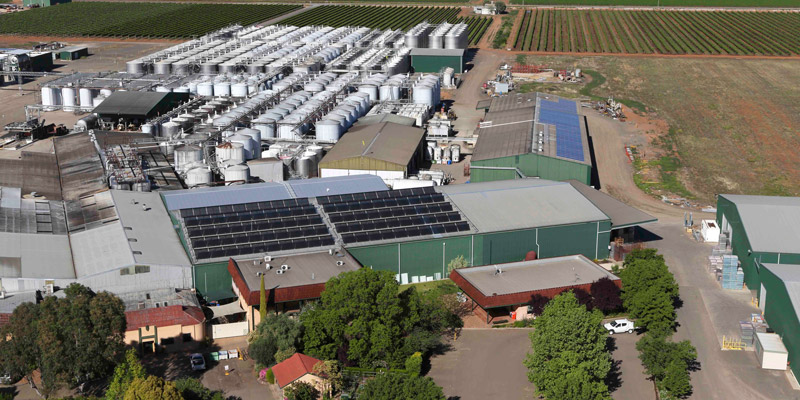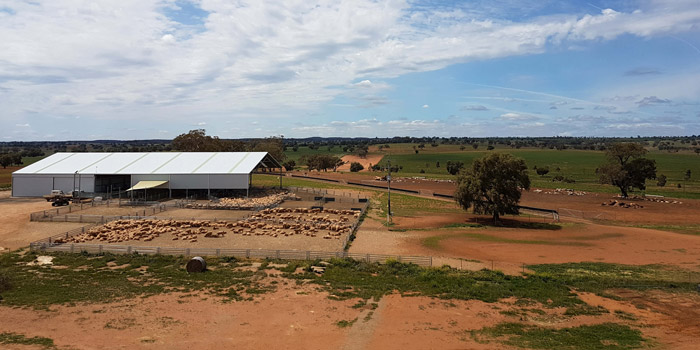To tackle mobile phone e-waste, Amsterdam-based and B-Corp-certified Fairphone manufactures modular smartphones that allow customers to repair and update just the parts they need to, such as the camera or battery, rather than purchasing an entirely new device. This modular design not only helps reduce e-waste, but also creates a new spare parts revenue stream for the business.
By recognising the greater system their business belongs to, Fairphone supports its own resilience by advocating for a fairer and more sustainable electronics industry. They practice responsible material sourcing and champion worker welfare, while also being transparent about business actions and openly sharing reports.
Fairphone has shown how a technology company can profit while also becoming a more sustainable, inclusive, and responsible entity than other technology producers who focus mostly on economic benefit.
This expansion of human-centred design to consider impacts to all life has grown as a trend over the last five years and is driving a new approach to product, service, and business design.
What is life-centred design?
Life-centred design expands a business’ focus from just business and customer needs to also respect the needs of life. The animals, environments, and ‘invisible’ humans directly and indirectly impacted by their operations, for mutual resilience.
The life-centred mindset transforms the idea of ownership of things to ‘responsible stewardship’ of resources and materials, from the point when the business extracts materials from the Earth to when customers dispose of them. This ecosystem view highlights broader interconnected relationships to respect and leverage, such as those with supply chain and other peripheral entities, communities, and environments. It also expands the idea of being inclusive to recognise and respect different ways to exist on the planet beyond the dominant development-focused mindset.
It’s a shift away from a purely anthropocentric world view to one that is more eco-centric, also referred to by Dr Glen Albert as The Symbiocene.
For businesses, life-centred design offers a way to develop and nurture their Environmental, Social, and Governance commitments by aiming to uphold three design values in every project:
- Sustainable and regenerative - ensuring the sustainability of product/service lifecycles and business activities by extending material value, reducing waste, and sharing prosperity with the broader ecosystem (environmental)
- Inclusive and pluriversal - designing for inclusion by default, and ensuring business ecosystem activities recognise and do not harm alternate ways of existing such as First Nation’s cultures (social)
- Responsible and aligned - aligning individuals, business goals, and partners with local and global goals and embracing transparency and accountability (governance)
While designing for these values is not new, life-centred design merges them into a cohesive framework so that they are designed for by default in every project.
Who has been leading the charge?
Various approaches and definitions of life-centred design have emerged recently, including the 24 Principles for Massive Change by well-known designer and thought leader, Bruce Mau, in his book MC24. It consolidated 30 plus years’ experience into 24 principles for shifting design, business leadership, and personal development to be more sustainable and just.
This new worldview for design means that responsibility for the welfare of all of life is now our mandate, our challenge, and our inspiration.
Bruce Mau (Mau, 2020)
Monika Sznel, a UX/Service designer in Poland, simplified initiating life-centred design by sharing two key tools. The Actant Mapping Canvas helps businesses identify the animals, environments, and invisible humans they impact, and Non-human/non-user personas can be created for these actants to represent their needs during design and business decision-making.
The true origins of life-centred thinking, however, should be acknowledged as coming from past peoples who lived in harmony with the planet for thousands of years, such as First Nations Peoples of Australia harvesting crabs from mangrove forests only when in season and then leaving the mangroves to recover; and the first Hawaiians mimicking native forests’ multiple-tiered structure and species diversification to ensure their own agricultural plantings maintained the forest's systemic abilities to maximise nutrients, sunlight, and water for all the forest’s life.
The blooming of life-centred design today resets modern design to merge the benefits of human-centred design with regenerative, pluriversal, and long-term thinking.
Life-centred climate adaptation opportunities
Up until now, most applications of life-centred design have focused on reducing human impacts on the planet to mitigate climate change and social injustice.
So, how might for-purpose businesses turn climate related risk into opportunities to support both their purpose and sustainability by examining their operations through a life-centred design lens?
Firstly, let’s clarify some goals of adaption
- Design to reduce risk now
- Design to respond/absorb during events
- Design to recover after events
Now, let’s explore how specific life-centred design strategies could support adaptation strategies and what opportunities might arise.
Life-centred businesses extend the life of their products by enabling customers to maintain and repair products. This could also empower customers in times of climate and related stresses by enabling them to repair things faster, which would also reduce customer demand on business for help. It also suggests potential new revenue streams for supplying spare parts and facilitating repair classes, amongst other opportunities.
Life-centred businesses might employ distributed manufacturing to reduce supply chain impacts and utilise local materials. This increases business resilience by reducing the risk of having one source of manufacturing - that if impacted could halt all business. It can also reduce shipping and supply chain costs.
Life-centred data use is more efficient and creative (while remaining ethical) such as embedding feedback mechanisms so that businesses, customers, and supply chain partners can constantly optimise circularity and sustainability. These feedback channels could become an antenna for signals of behaviour change and new service opportunities.
Exploring the idea of moving from ownership of things to ‘responsible stewardship’ could shift a business from selling individual products to offering their product as a service, giving them more control over quality, sustainability, and costs.
Business resilience through interconnections
In essence, life-centred design supports the two most important relationships recognised long ago by many First Nations Peoples—the relationship between people, and between people and land.
The three life-centred design values allow us to reflect on how solutions can be more than just sustainable, and Fairphone illustrates how we go beyond sustainability to also address social issues. We can also ask how might life-centred design be used to connect businesses more deeply with their natural and human support system - while remaining economically sustainable?
Sznels’ system mapping for identifying the non-humans and non-users connected to the business ecosystem could also help to identify those most vulnerable to climate change, and those who might need support in preparing, adapting, and recovering. Designers and businesses could then craft non-human and non-user personas to represent their most vulnerable customers, staff, communities, animals, and environments, to ensure their needs are factored into any business adaptation plans, driving forward the just transition.
Additionally, personas could be crafted for local threats, such as fires, floods, storms, and other climate change impacts to better understand them and a business’ relationship with them, such as how their activities might fuel climate events. This in turn enables a more effective and protective risk management approach for business.
Life-centred design reconceptualises the idea that business can keep itself separate from wider community well-being by recognising that social and environmental instability also increases business risk and unsustainability.
A non-human persona for the planet might tell us it is using climate change to remind humanity of the importance of the relationships between people and land and people and people. Nurturing these interconnections could be the most important thing businesses, individuals, and communities focus on today to prepare for future disruptions and shortages that will tempt humanity to become even less life-centred and more me-centred.
While life-centred design is not a silver-bullet, it does have the potential to connect businesses, individuals, and communities with common purpose so that all life on the planet becomes more resilient and adaptable. And it presents a more advanced tool for helping to solve the greatest existential crisis of our time.
All of these signals suggest new needs and ways of living that smart for-purpose businesses could poise themselves to service so that both their business and their purpose thrive.
This article was written by Damien Lutz, a keynote speaker at the AdaptNSW 2023 forum
Join two days of discovery, collaboration and innovation from 4-5 December at the 2023 AdaptNSW Forum.
Articles
Find out how De Bortoli Wines is reducing its greenhouse gas emissions, operating more sustainably, and saving hundreds of thousands of dollars each year.
Find out how digital technologies can help farmers become more resilient to climate change and improve farm productivity.


